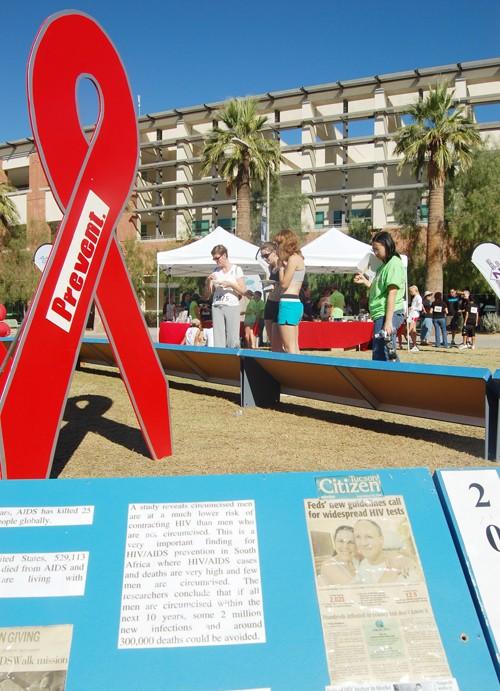Some familiar fixtures on campus may look different today as an array of campus organizations team up to draw attention to a global epidemic.
Various colleges, clubs and organizations are sponsoring a “”Day Without Art”” to promote AIDS awareness.
For the event, the groups will cover statues, paintings, and other artwork around campus with black plastic bags and posters displaying statistics about HIV and AIDS.
“”The purpose is to get people to think about how this is a serious disease and hopefully change their behavior so they’re practicing safe sex,”” said Justin Peterson, an interdisciplinary studies senior and director of outreach for AIDS SAFE.
The event will also attempt to clear up any prejudices and stereotypes associated with the disease, said Chinenye Anako, a second year medical school student and a World AIDS Week coordinator.
“”We’re trying to show that HIV affects everyone,”” she said.
Some of the art that will be covered includes the statues in front of the main library, the chairs in front of the Marroney Theatre, the figures pushing against the wall in front of the Harvill building, and the wildcat family on the UA Mall.
The event is part of World AIDS Week, which is Nov. 30 through Dec. 4. World AIDS Day is Dec. 1.
Peterson said the event has been conducted on campus on a smaller scale in previous years.
“”We’ve made it into a much bigger event so that everybody sees it real prominently,”” he said.
Peterson said that the “”Day Without Art”” illustrates the message they are trying to send.
“”(Lives affected by AIDS are) something that’s beautiful that’s being taken away from us,”” he said.
Because there is no central authority in charge of the artwork on campus, Peterson said it was difficult to get permission to use the various works of art for the event. However, he said the administration was receptive to the idea.
Peterson founded the AIDS SAFE club after visiting a clinic that treated AIDS patients in the Dominican Republic last summer and taking an Individuals and Societies class called “”Sex, Health, and AIDS.”” The club now has about 15 members who teach people about the disease, both on the UA campus and in high schools in the Tucson community.
Peterson said younger people are disproportionately affected by AIDS simply because sometimes they are not as careful as they should be.
Every nine and a half minutes someone in the United States is infected with HIV, and more than 14,000 people with AIDS die every year, according to the Centers for Disease Control and Prevention.
Along with AIDS SAFE, the College of Medicine’s Global Health Forum, the American Medical Student Association, the Student National Medical Association, African Americans in Life Sciences and representatives from the College of Pharmacy and the College of Public Health’s Global Health Alliance jointly organized the event.
“”We want to educate the public about the disease and try to motivate anyone who wants to know about their status to get tested,”” Anako said. “”Unless people learn about it … it’s always going to be a problem.””









